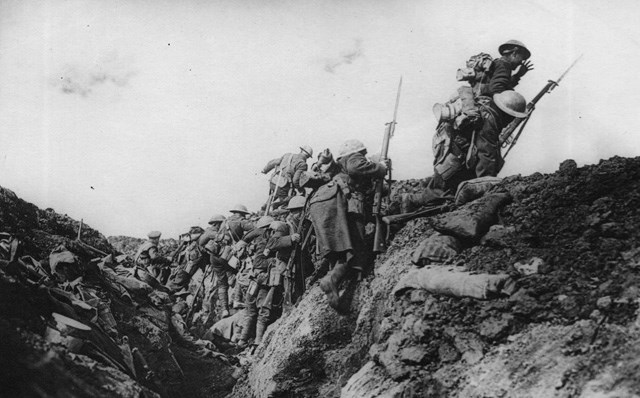Okotoks’ role in what is a symbol of Canadian achievement, sacrifice and freedom will be on display for all to see the next three months.
In honour of 100 years since the Battle of Vimy Ridge, the Okotoks Museums and Archives is displaying an exhibit throughout April, May and June to complement its cumulative exhibit Okotoks and World War I.
The Battle of Vimy Ridge from April 9 to 12 in 1917 saw four divisions of the Canadian Corps defeat three divisions of the German Sixth Army. The Canadian victory is a hallmark moment in Canada’s development as a nation.
“It’s up to museums and legions to continue to educate younger generations about World War I and the contributions Canadians made, particularly at Vimy Ridge, because it was such an accomplishment for the Canadian troops,” said Kathy Coutts, museum specialist. “We don’t want that to ever be forgotten.”
Staff create an exhibit every year on April 9 for Birth of a Nation Day, but Coutts said this year is special.
“This year April 9 falls on a Sunday and we’re closed, so I thought why not extend the exhibit beyond just one day and do something more in depth than in the past,” she said, adding it opens on April 1. “Because it is the 100th anniversary I thought I would so something larger and more in-depth.”
The exhibit consists of six panels featuring photographs, details about the battle and letters written by Okotoks soldiers who fought at Vimy Ridge and were published in the Okotoks Review newspaper, said Coutts.
One letter is written by Albert Banister to his brother Harold.
“I had the pleasure last Monday night and early Tuesday morning of seeing our artillery open the ball on the big offensive which we are going to keep up till we have Fritz licked,” he wrote. “The number of guns taking part would be impossible to make a guess at, but I should say several thousand cannon. They opened the ball at 4:45 a.m., all firing off the first round at the same moment. You can imagine what a sight it was. Our guns were just under the crest pretty well together, as far as you could see, and for an hour they all fired a shot every five seconds… over a 12 mile front. You can imagine the flash and roar.”
Private Fyall of Aldersyde wrote a letter to Lynn Barrett that described the battle in detail.
“Our trenches were a sea of mud and slime and bodies of our comrades, killed by the terrible weight of naval shells which they showered on us from their eight-inch guns,” he wrote. “The next morning, by 4 o’clock, all the bombs and grenades were ready and the Canadian army was in position for the attack. About 5 o’clock, like one gun, all our artillery opened up on the front, and the hellish din and roar, and line of fire opened up in front of us was intermingled with flares.”
Fyall wrote that after “strenuous fighting” they lost about 40 per cent of their effectives. Fyall himself was injured in the battle, but not enough to stop him from moving forward.
“The captain wanted me to take a message back to headquarters,” he said. “I started out and went back over the ground we gained, about a mile. I got into a (German) trench we had fought hard for, and there were many mothers’ sons lying with their eyes glazed in death. I actually cried bitter tears when I picked up a Fritz haversack and found in it a little parcel containing butter and sugar from his Frau in Germany… I cannot tell you in English the horrors of that modern battlefield.”
Coutts said the Vimy Ridge exhibit will contain many facts about the iconic battle, including details leading up to the battle, the battle itself and the challenges the other allies faced trying to capture the ridge.
However, it’s the stories told in these letters that really show what it was like being there.
“They are quite moving,” she said of the letters. “It really goes to show the human side of the war, that they were sons and brothers and fathers who were fighting on the German side, too.”
Letters and articles published in local newspapers were the only way most people got information about the war, Coutts said.
“There was very little information coming from anywhere else,” she said. “The newspaper was their source of information and when a family received a letter they shared that with the community, which is wonderful because we now have copies of that and it’s a legacy to what they went through.”
Coutts said three Okotoks soldiers and 14 from across the Foothills died during the Battle of Vimy Ridge, or shortly afterwards due to injuries sustained from the battle.




